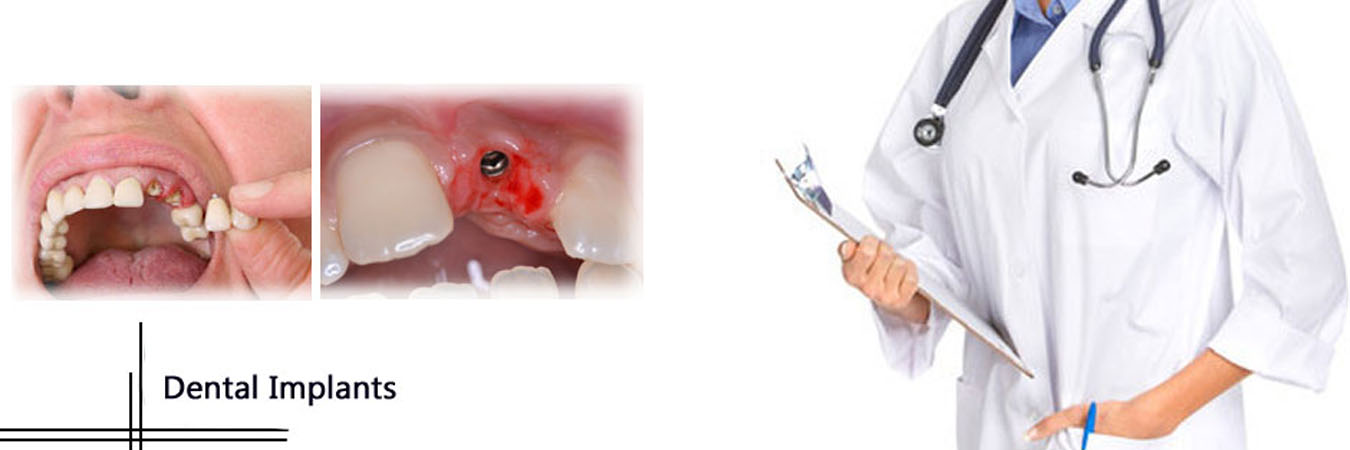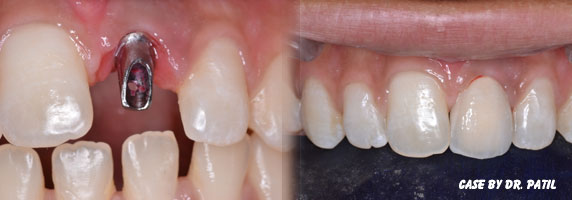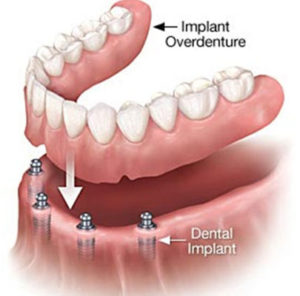
Dental Implants
Dental Implants have changed the face of dentistry over the last 25 years. What are dental implants? What is the history of dental implants? And how are they used to replace missing teeth? This section will give you an overview of the topic of dental implants, to be followed by more detail in additional sections.
As with most treatment procedures in dentistry today, dental implants not only involve scientific discovery, research and understanding, but also application in clinical practice. The practice of implant dentistry requires expertise in planning, surgery and tooth restoration; it is as much about art and experience as it is about science. This site will help provide you with the knowledge you need to make informed choices in consultation with your dental health professionals.
Let’s start from the beginning: A dental implant is actually a replacement for the root or roots of a tooth. Like tooth roots, dental implants are secured in the jawbone and are not visible once surgically placed. They are used to secure crowns the parts of teeth seen in the mouth), bridgework or dentures by a variety of means. They are made of titanium, which is lightweight, strong and biocompatible, which means that it is not rejected by the body. Titanium and titanium alloys are the most widely used metals in both dental and other bone implants, such as orthopaedic joint replacements. Dental implants have the highest success rate of any implanted surgical device.
What are the options for implant supported tooth replacement?
Single Tooth Replacement: Immediately at the same time an implant is placed) or after a period of healing, an abutment is attached to the implant. This is a device that “abuts” or joins the implant to a tooth form called a crown, which replaces the tooth part you see in the mouth. It will hold a custom-made crown that the dental laboratory will fabricate and match to your existing teeth. The custom crown is cemented or screwed onto the abutment to permanently keep it in place. Once the crown is in place, it should be indistinguishable from your natural teeth.

Fixed Multiple Tooth Replacement: As with single tooth replacement, temporary healing caps or abutments may be placed on multiple implants until the healing phase is complete. After healing, permanent abutments are attached to the implants. They can attach to custom-made crowns or bridgework that a dental laboratory will fabricate to match your existing teeth. In the final step, the custom bridge, which will replace multiple teeth, is cemented or screwed onto the abutments. The teeth have been replaced without disturbing the healthy teeth next to them, and bone loss has been halted.
Removable Implant-Supported Tooth Replacement: If all of your lower teeth are missing, depending on the design of the removable restoration, two to six implants may be used to support a lower denture. If all of your upper teeth are missing, a minimum of four implants may be used to support an upper denture. Removable dentures are often used to replace extensive tooth, bone and gum-tissue loss, thus providing support for the facial skeleton, lip and cheeks. A new denture can have attachments that snap or clip it into place on the implants or a custom made, milled bar can be fabricated to create additional strength and support for the restoration. Design variations are often related to your bone density and number of implants present; your dentist will discuss these options during your consultation. A significant advantage of a removable denture is facilitating the cleaning of the dental implants.


